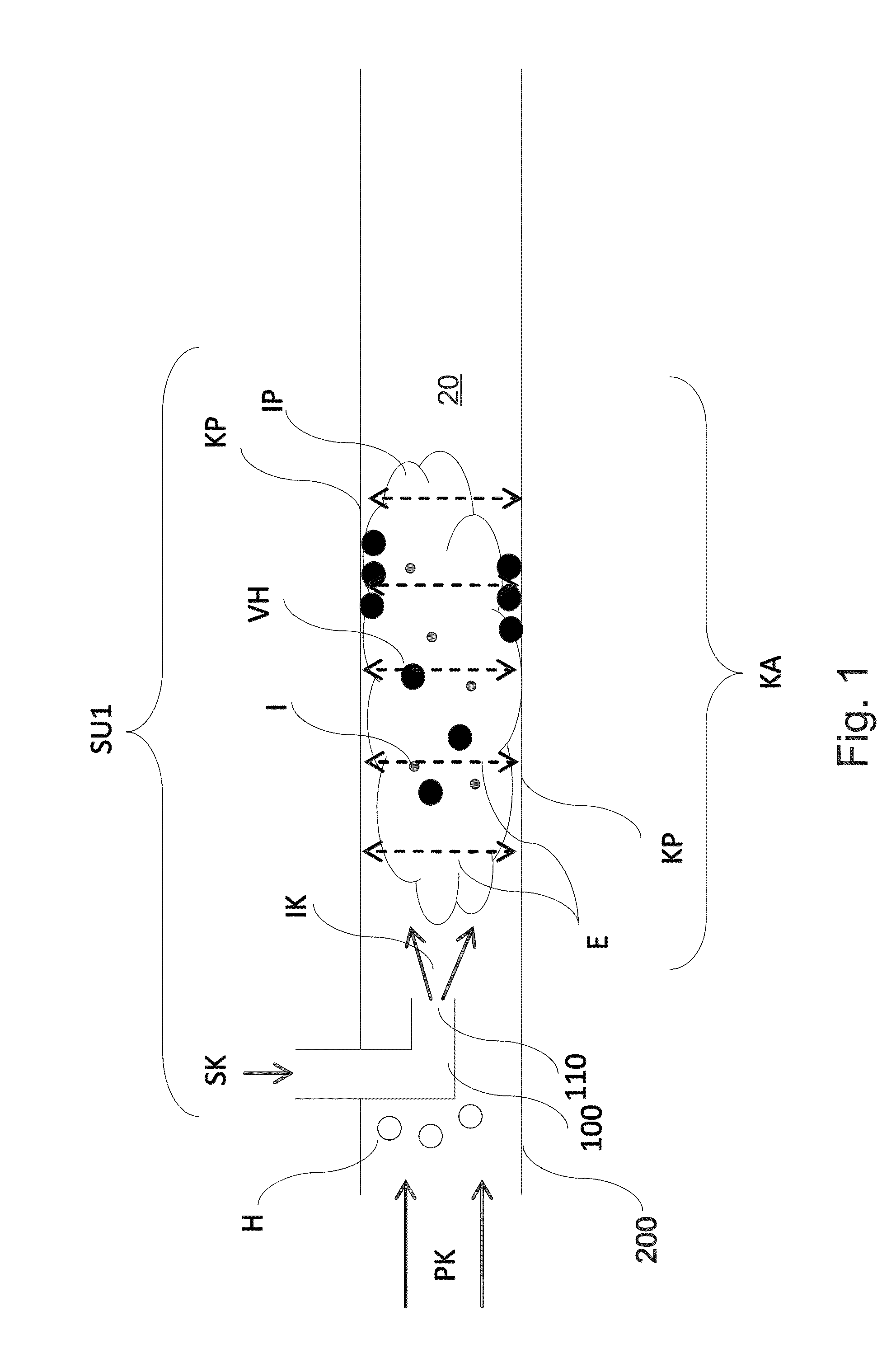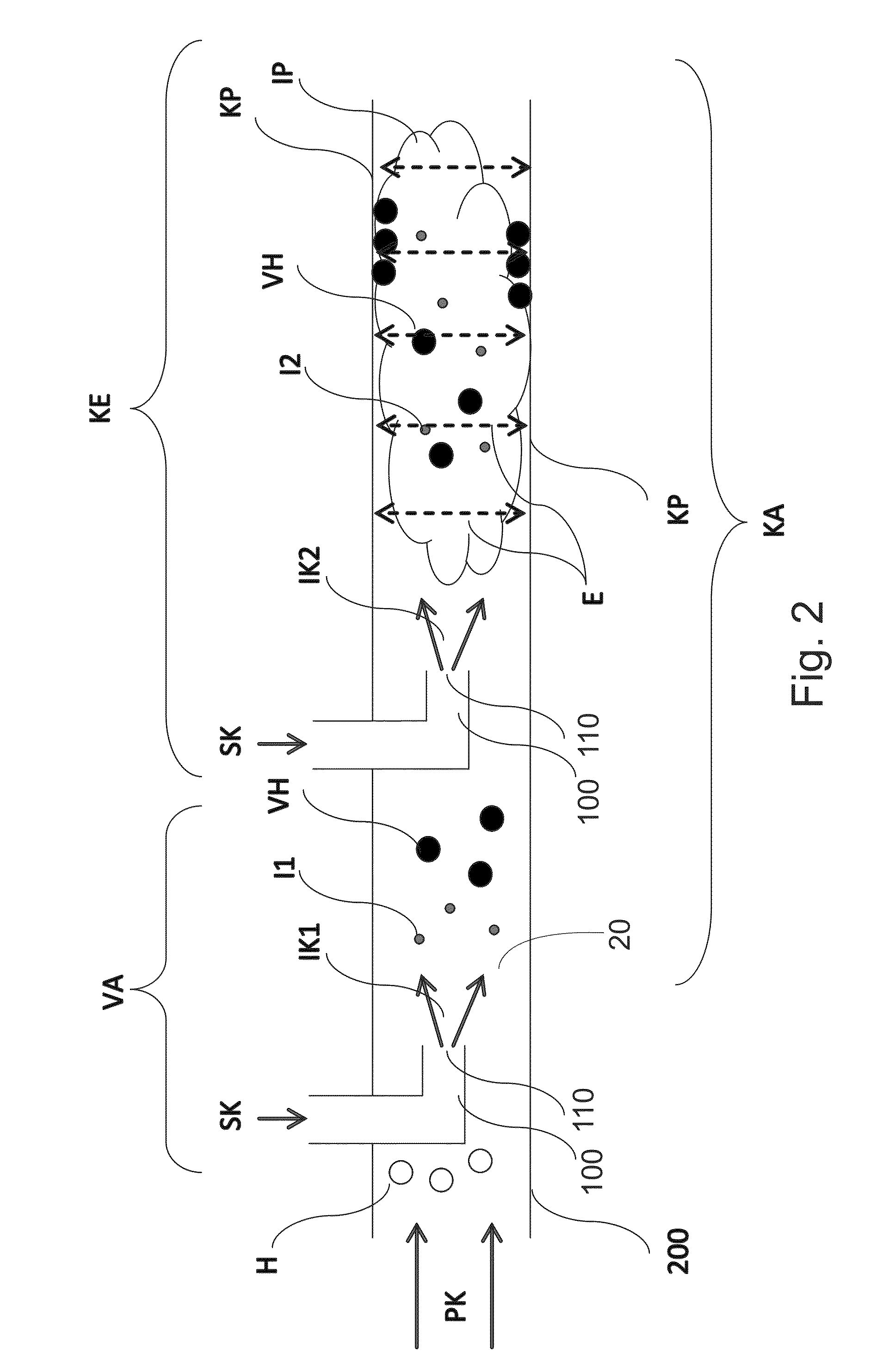Method for collecting fine particles from flue gases, and a corresponding device and arrangement
a technology of flue gas and fine particles, which is applied in the direction of electrode cleaning, magnetic separation, lighting and heating apparatus, etc., can solve the problems of affecting and affecting the health of people, so as to prevent the occurrence of odor, the risk of fine particle collection detaching from the wall is small, and the efficiency of fine particle separation can be increased
- Summary
- Abstract
- Description
- Claims
- Application Information
AI Technical Summary
Benefits of technology
Problems solved by technology
Method used
Image
Examples
Embodiment Construction
[0053]For reasons of clarity, the figures only show the details necessary in terms of the invention. Structures and details that are unnecessary in terms of the invention, but which will be obvious to one skilled in the art, have been omitted from the figures, in order to emphasize the specific features of the invention. Such unnecessary details are, among others, the firebox and the more detailed structures of the heat exchanger.
[0054]In the method according to the invention, a flue gas containing fine particles, which can come from, for example, a boiler, is cleaned of fine particles by collecting the fine particles on collector surfaces. In the method, for example, the flue gases containing fine particles exiting the combustion chamber are led to a selected chamber acting as a flow channel delimited by walls, such as, for example, a flow channel flowing downwards from the boiler. An ion source separate from the selected chamber delimited by walls is situated in the flow channel a...
PUM
 Login to View More
Login to View More Abstract
Description
Claims
Application Information
 Login to View More
Login to View More - R&D
- Intellectual Property
- Life Sciences
- Materials
- Tech Scout
- Unparalleled Data Quality
- Higher Quality Content
- 60% Fewer Hallucinations
Browse by: Latest US Patents, China's latest patents, Technical Efficacy Thesaurus, Application Domain, Technology Topic, Popular Technical Reports.
© 2025 PatSnap. All rights reserved.Legal|Privacy policy|Modern Slavery Act Transparency Statement|Sitemap|About US| Contact US: help@patsnap.com



